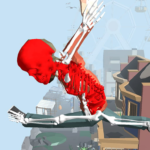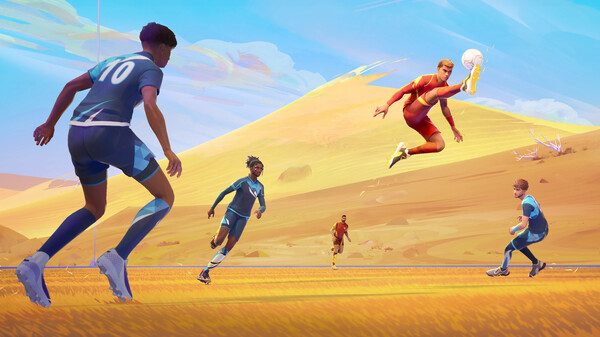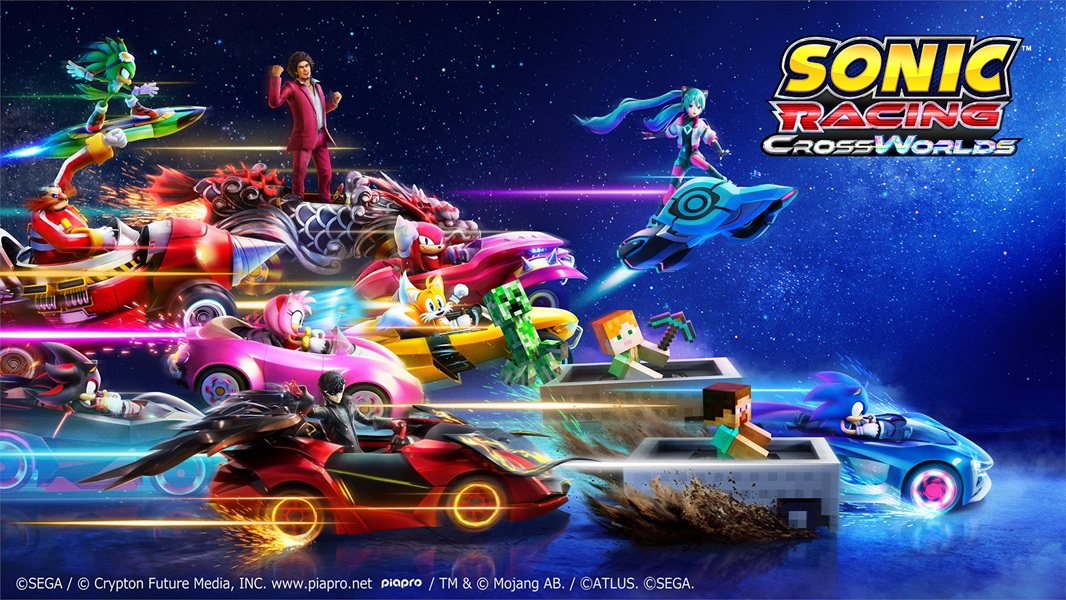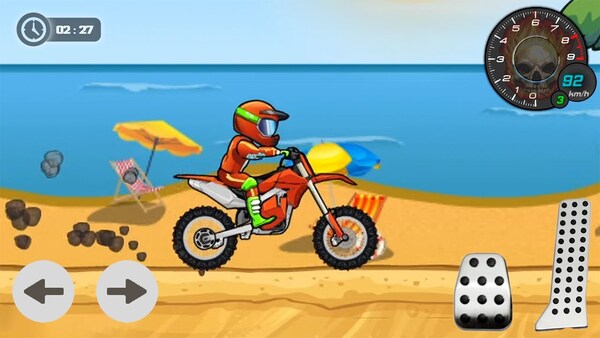In a gaming landscape often dominated by hyper-realistic graphics and sprawling open worlds, sometimes a title comes along that defies expectations with a simple yet profoundly engaging premise.
PEAK, developed by the collaborative genius of Aggro Crab and Landfall, is precisely that game.
Launched on June 16, 2025, this cooperative climbing survival game has quickly ascended the ranks of popularity, captivating players with its unique blend of challenging mechanics, chaotic physics, and an unwavering emphasis on teamwork. You and your fellow lost nature scouts are stranded on a mysterious island, with your only hope of rescue lying at the summit of a colossal, ever-changing mountain. It's a journey fraught with peril, unexpected environmental hazards, and the sheer absurdity of trying to scale impossible heights with your friends. Join us as we dissect what makes PEAK an exhilarating, frustrating, and ultimately unforgettable experience that is more than just a goofy co-op fad.
The Genesis of a Goofy Giant: Aggro Crab, Landfall, and a Mountainous Idea (Pre-Launch to Release)
The collaboration between Aggro Crab (known for
Another Crab's Treasure) and Landfall (the masterminds behind
Totally Accurate Battle Simulator and
Content Warning) immediately sets expectations for a game that blends quirky humor with engaging mechanics. PEAK wasn't just another project; it seems to have emerged from a shared desire to create a chaotic yet deeply cooperative experience, leveraging their respective strengths in whimsical design and emergent gameplay.
A Marriage of Mirth and Mechanics: The Vision for PEAK
The core idea for PEAK likely stemmed from a simple, compelling concept: what if climbing, a often solitary and precise mechanic in other games, became a hilarious and frantic cooperative challenge? The developers embraced the potential for slapstick comedy inherent in players grappling with treacherous terrain, dwindling stamina, and each other. This vision transcended mere platforming; it was about creating a dynamic system where creative problem-solving and improvisation were key. They understood that the joy would come not just from success, but from the shared absurdity of failure and the desperate "grab my hand!" moments. The decision to make the mountain procedurally generated daily was a stroke of genius, ensuring endless replayability and a fresh challenge with every session.
From Concept to Phenomenon: A Swift Ascent to Popularity
Upon its release, PEAK quickly caught fire, much to the developers' "sarcastic frustration" (as noted by Aggro Crab regarding its sales outpacing Another Crab's Treasure). Its immediate success on Steam, garnering over a million copies sold within a week, underscored a strong market appetite for unique co-op experiences. This rapid ascent meant that the game, while polished in its core concept, was thrust into the spotlight with an enormous, passionate player base eager to explore its depths. The pre-release buzz, coupled with the immediate virality generated by streamers and content creators showcasing its hilarious moments, propelled PEAK into the gaming zeitgeist as one of 2025's breakout indie hits.
Core Gameplay Loop: Climb, Survive, and Collaborate
PEAK's gameplay is deceptively simple: climb a mountain. However, the execution transforms this basic objective into a demanding, physics-driven, and often hilarious struggle for survival.
The Vertical Gauntlet: Stamina, Grip, and Environmental Perils
The primary mechanic revolves around
stamina management. Every action – climbing, jumping, even just hanging – depletes your stamina bar. Running out means a perilous fall, and falls from significant heights are almost always fatal.
Players must master precise movements, plan their routes carefully, and identify resting points to regenerate stamina. The mountain itself is a character, presenting an ever-changing array of environmental hazards: icy patches that reduce grip, strong winds that push you off ledges, toxic flora that poison, and treacherous lava flows that inflict burning damage. These elements force constant adaptation and quick thinking, turning each climb into a unique puzzle with lethal consequences for missteps.
The Essence of Co-op: Hand-Holding and Resource Sharing
While technically playable solo, PEAK is undeniably designed for
cooperative play. The game brilliantly implements mechanics that necessitate teamwork:
- Hand-holding (literally): Players can extend a hand to pull up struggling teammates, boost them over difficult ledges, or simply provide stability. This is often the source of both heroic saves and comical tumbles.
- Resource sharing: Food, medical supplies (bandages, antidotes, heat packs), and climbing tools are limited and must be judiciously shared among the group. A well-stocked backpack for one person means less for others, forcing strategic inventory management.
- Checkpoints: Reaching checkpoints allows players to revive fallen comrades, reinforcing the idea that no scout is left behind. This system mitigates the frustration of full restarts and encourages perseverance.
This intense reliance on collaboration makes PEAK a fantastic bonding experience, where communication ("Grab my hand!", "Do you have any bandages?!") becomes paramount, fostering a true sense of camaraderie (or friendly blame) amidst the chaos.
Procedural Generation and Biomes: An Ever-Changing Ascent
One of PEAK's most brilliant design choices is its daily procedural generation of the mountain, ensuring that no two climbs are ever truly the same. This, combined with distinct biomes, keeps the experience fresh and challenging.
A New Island Every Day: Replayability Redefined
The
daily map reset is a game-changer for replayability.
Each new day presents a completely new mountain layout, with different climbing routes, resource placements, and hazard distributions. This means that players cannot simply memorize a perfect path; they must adapt their strategies, explore, and problem-solve anew with every session. This constant novelty is a powerful incentive for players to return day after day, eager to conquer the latest iteration of the treacherous PEAK. It also fosters a sense of discovery and shared exploration within the community.
Journey Through Diverse Landscapes: From Shore to Kiln
The mountain is divided into distinct biomes, each introducing unique challenges and visual themes:
- The Shore: The starting area, a relatively calm coastline with easier rocks, perfect for learning basic mechanics. It introduces minor hazards like poisonous jellyfish.
- The Tropics: A dense and humid jungle, introducing vine swinging, plant-based traps, and intermittent rain that makes climbing harder.
- Alpine: A snowy, treacherous mountain where ice reduces grip, strong winds push players, and warmth sources become vital to combat frostbite.
- Caldera: A volcanic region filled with lava, featuring lava tides and igniting surfaces, demanding careful route planning to avoid burns.
- Kiln: The final, most brutal ascent inside the volcano, a vertical labyrinth of lava and extreme heat where every move is critical.
This progression through visually and mechanically distinct zones adds significant variety and ensures the journey to the summit remains engaging throughout.
Art Style and Sound Design: The Charm of Clumsy Adventure
PEAK embraces a unique aesthetic and auditory experience that perfectly complements its chaotic co-op gameplay, prioritizing atmosphere and character over photorealism.
Cartoonish Charm and Visual Clarity: The PEAK Aesthetic
The game sports a
bold, cartoonish visual identity.
Soft-edged character designs, pastel colors, and thick-lined UI elements give it a whimsical, scout-camp tone. This stylized approach prevents the game from looking dated and allows for clear visual communication of hazards and interactable elements, which is crucial during frantic climbing sequences. While animations can sometimes be endearingly clumsy – characters tumble and jerk with little grace – this often adds to the slapstick humor and reinforces the "survival" aspect, where perfect movement isn't always an option. The exaggerated designs, from quirky snack names to oversized backpacks, infuse the world with a lighthearted silliness that acts as a delightful contrast to the often brutal difficulty.
The Grounded Soundscape: Immersion Through Ambient Detail
PEAK's sound design is remarkably effective in creating immersion without relying on sweeping musical scores. The audio is
grounded in nature: birdsong, the rustle of leaves, the whistle of wind, and the ominous hum that kicks in when entering dangerous new areas. There's an oddly satisfying crunch and scrape sound effect when grabbing onto surfaces, providing crucial tactile feedback. The ambient sounds do the heavy lifting, creating a quiet tension that can suddenly erupt into frantic cries for help as teammates fall. Crucially, the
proximity chat dynamically lowers the volume of distant teammates, leading to genuinely hilarious and desperate pleas fading into the background as someone plummets. This feature alone fosters unforgettable moments of shared despair and laughter.
Monetization Model: Pure Premium, No Gimmicks
In a refreshing departure from many modern titles, PEAK adopts a straightforward, transparent monetization model that focuses on a one-time purchase, valuing a complete experience over microtransactions.
One-Time Purchase: Value and Accessibility
PEAK is sold as a
premium game, meaning players pay a single upfront cost to own the full experience. This model is increasingly appreciated by a segment of the gaming community tired of battle passes, in-game stores, and gacha mechanics. It simplifies the player experience, removing any pressure to spend additional money to progress or gain advantages. This transparency contributes significantly to a positive player perception, fostering trust between developers and their audience. The initial low price point for the game further enhances its appeal, making it an accessible and attractive option for groups of friends looking for a new co-op staple.
Focus on Gameplay, Not Grind: A Refreshing Approach
By foregoing in-app purchases or a complex currency system, PEAK's monetization inherently keeps the focus squarely on its core gameplay. There are no power-ups to buy, no cosmetic items to unlock through premium currency, and no "pay-to-win" elements. All progression comes from player skill, teamwork, and persistence. This design philosophy aligns perfectly with its challenging nature, ensuring that success is earned, not purchased. It’s a testament to the developers' confidence in their core mechanics and their desire to deliver a pure, unadulterated co-op climbing adventure.
The Community and Streaming Phenomenon: Shared Laughter and Despair
PEAK's inherent chaos and cooperative nature have made it a darling of the streaming community, driving its rapid popularity and fostering a vibrant, anecdote-rich player base.
Viral Moments and Content Creation: Fueling the Hype
The game is tailor-made for viral content. The physics-driven falls, desperate hand-grabs, miscommunications, and last-second saves create endlessly entertaining clips for platforms like Twitch and YouTube. Streamers showcasing their chaotic attempts to conquer the mountain, often resulting in hilarious failures and triumphant (if clumsy) successes, have been instrumental in PEAK's organic growth. This virality is a powerful marketing tool, drawing new players who want to experience the same absurd fun with their friends. The community actively shares tips, funny moments, and tales of their latest climbs, cementing PEAK's status as a shared cultural phenomenon.
Discord and Social Hubs: Building a Climbing Tribe
Beyond in-game interactions, PEAK fosters strong community engagement through platforms like Discord.
Players can easily find groups, share strategies, report bugs, and revel in shared experiences. The developers are reportedly active within these communities, gathering feedback and fostering a sense of collective ownership over the game's evolution. This strong community aspect, driven by the game's cooperative design, contributes significantly to its lasting appeal and ensures players always have someone to attempt the next summit with.
Strengths: Where PEAK Truly Shines
PEAK’s success isn't just about its viral appeal; it's built on a foundation of solid design principles that leverage its core concept effectively.
The Unrivaled Co-op Experience: Friendships Tested and Forged
At its absolute best, PEAK delivers one of the most engaging and hilarious co-op experiences in recent memory. It pushes players to communicate, coordinate, and trust each other in ways few games do. The moments of shared triumph after overcoming a particularly tricky section, or the synchronized groans after a catastrophic fall, forge unforgettable memories. It's a game that actively promotes positive social interaction and problem-solving within a playful, chaotic framework.
Endless Replayability through Procedural Generation
The daily changing map is a masterstroke. It ensures that the game never truly grows stale, always offering a fresh challenge and new routes to discover. This provides incredible value for its modest price point, guaranteeing hundreds of hours of unique content for dedicated players. The random item placements further enhance this, forcing players to adapt their strategies based on what resources they find.
Accessible Yet Challenging Design
PEAK manages to be incredibly accessible in its basic mechanics – grab, jump, move – but profound in its mastery. It's easy to pick up and understand the goal, but incredibly difficult to execute perfectly, especially under pressure. This low barrier to entry combined with a high skill ceiling appeals to a wide range of players, from casual friends looking for a laugh to dedicated climbers seeking to conquer the latest daily mountain.
Weaknesses: Where the Ascent Stumbles
While PEAK is overwhelmingly positive, its focus and design choices do come with certain trade-offs that might impact some players' experiences.
The Solo Summit: A Lonely and Frustrating Climb
This is by far PEAK's most significant drawback. While technically playable solo, the game
loses much of its magic and becomes significantly more frustrating and less enjoyable without teammates. The challenges designed for cooperative problem-solving become arduous solo endeavors, often feeling unfairly difficult or simply tedious. The lack of in-game matchmaking further exacerbates this, effectively locking out players who don't have a pre-arranged group of friends to play with. This drastically limits its appeal for solo adventurers.
Occasional Clunkiness and Learning Curve
While controls are generally responsive, certain movements, especially precise jumps or desperate grabs, can feel
clunky or unforgiving, leading to frustrating falls that feel more like game errors than player mistakes. The inventory system, while functional, can also be somewhat unintuitive, particularly in the heat of the moment. New players might face a steep initial learning curve not just with the climbing mechanics, but also with understanding the various debuffs, food effects, and item uses without much explicit guidance.
Potential for Repetition (for some)
Despite the procedural generation, the core loop of "climb, manage stamina, avoid hazards" can eventually feel repetitive for players who log extensive hours. While the routes change, the fundamental actions remain the same. More varied objectives or distinct "mission types" beyond simply reaching the top could potentially extend its long-term appeal for the most dedicated players.
Final Verdict: A Must-Play Co-op Gem
PEAK is a brilliant, chaotic, and ultimately triumphant addition to the cooperative gaming landscape. Aggro Crab and Landfall have distilled the essence of frantic, friendship-testing fun into a deceptively simple climbing adventure. Its procedurally generated mountains ensure endless replayability, its humorous art style and clever sound design create a unique atmosphere, and its unwavering commitment to a one-time purchase model is a refreshing breath of fresh air.
While the game is undeniably a pale imitation when played solo and can occasionally feel clunky, these are minor quibbles against the backdrop of its overwhelming strengths. PEAK thrives on shared laughter, desperate pleas for help, and the triumphant cheer of reaching a new checkpoint with your companions. It's a game that not only entertains but actively encourages communication, problem-solving, and camaraderie. If you have a group of friends looking for their next addictive, memorable co-op experience, grab a rope, prepare to fall, and aim for the
PEAK. It's a climb absolutely worth taking.


































